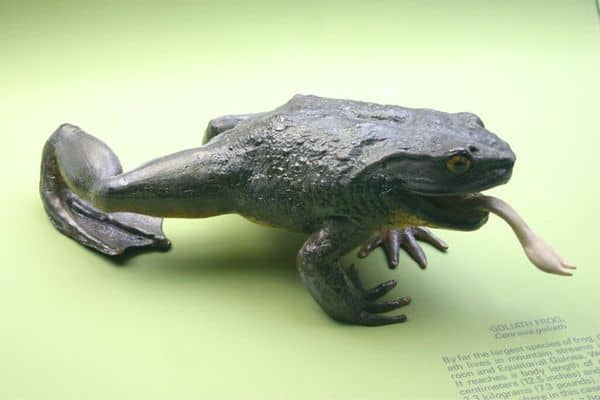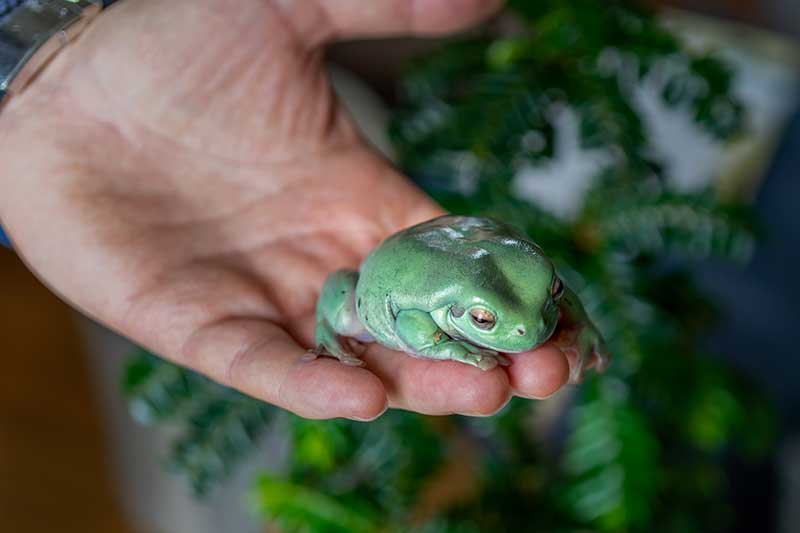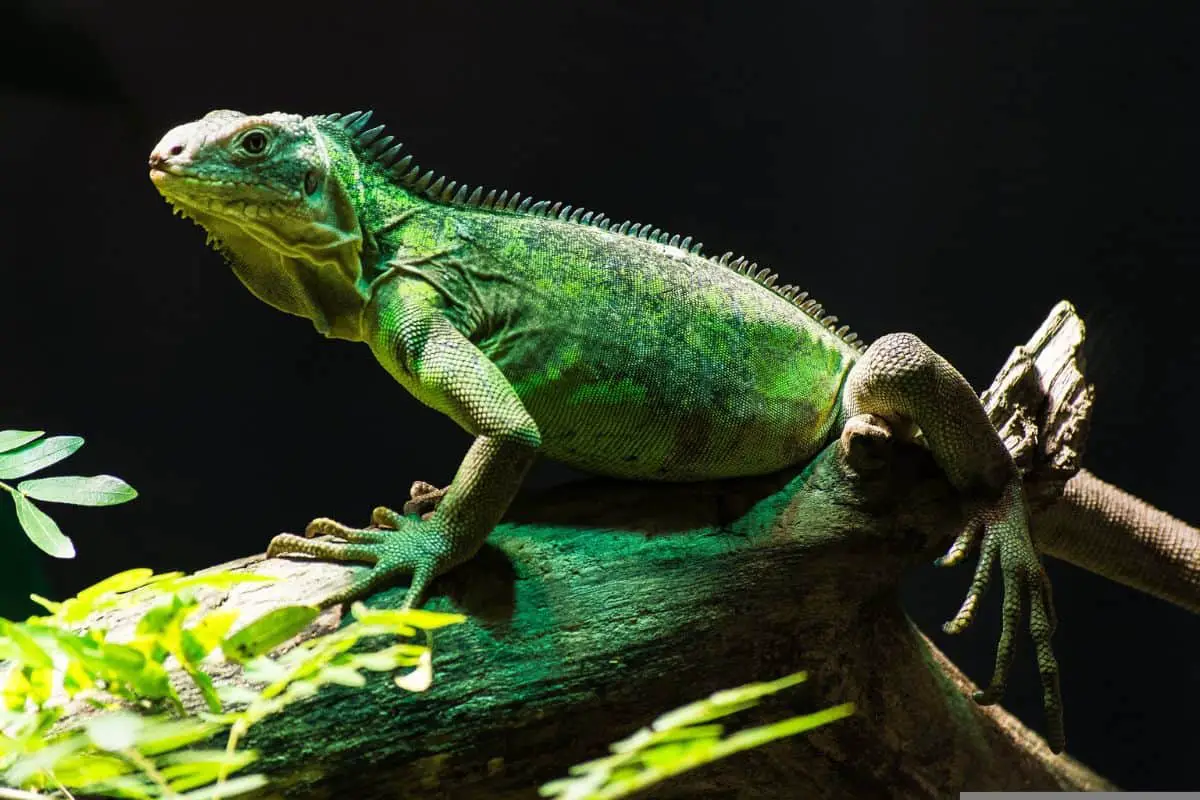Frogs that eat snakes are one of nature’s most fascinating creatures. Most frogs are small and harmless, eating mostly small insects and worms, but some species are much larger than expected and have been known to eat prey as large as them. In this article, we’ll look at some of the types of frogs known to eat snakes, as well as their characteristics and where you can find them.
10 Frogs that eat snakes
Here is a list of 10 frog species known to eat snakes:
1. American bullfrog

Scientific Name: Lithobates catesbeianus
The American bullfrog is the largest frog in North America, reaching lengths of up to 6 inches as adults. They’re brown or olive green in color, with a large head and a wide mouth. These species of frogs have strong legs for leaping and can live in the wild for up to 10 years and in captivity for up to 15 years.
American bullfrogs will eat almost anything they can get their hands on. In fact, they’ve been observed consuming small mammals, snakes, birds, fish, crayfish, and insects. You can find this animal all over North America, from Canada to Florida and up to the Great Plains and Rockies.
2. Green frogs

Scientific Name: Lithobates clamitans
Green frogs are among the North American frogs that eat snakes. They can be found from Canada to the east coast of the United States. You can find these animals in various habitats, including ponds, marshes, lakes, and streams.
Green frogs are brownish-green in color, with dark spots or blotches on their skin. Some rare species have blue colors. They also have a ridge running from the side of their heads to the bottom of their bodies.
As carnivorous amphibians, they would also consume small animals like frogs and snakes, but these amphibians primarily consume invertebrates and small insects.
3. Pacific horned frog
Scientific Name: Ceratophrys stolzmanni
The Pacific horned frog is a small amphibian species found in Ecuador and Peru. The skin of this horned frog is bright green with dark brown blotches. Small red warts can also be seen on its body.
These animals eat mostly small rodents, fish, and reptiles like snakes and frogs. They’re also known for being extremely calm in the wild but aggressive in captivity. Pacific horned frogs are typically found in tropical rainforests, sandy shores, and dry shrublands, but will move to shallow waters during the breeding season.
4. Cane toad

Scientific Name: Rhinella marina
Cane toads are large toads found in South and Central America. It was also introduced as a pest control method in other countries such as Australia, Fiji, the Philippines, and the Caribbean.
This toad can reach a length of 6 inches and is reddish to grayish brown in color with dark markings on its back. It has a cream or light yellow underside. This creature can kill their predators by using the venom produced by the glands on its shoulders as self-defense.
Since a cane toad is a large amphibian, it can eat a wide range of animals, including small insects, snakes, and mammals that can fit into its mouth.
5. Goliath frog

Scientific Name: Conraua goliath
The Goliath frog, also known as the giant slippery frog, is the largest frog species. It’s found in Cameroon and Equatorial Guinea and is native to Western and Central Africa. These amphibians can reach 13 inches in length and weigh up to 7 pounds.
They can swim easily due to their long legs and webbed feet. Goliath frogs have dark greenish brown skin on the back and pale yellow skin on the underside. Their diet includes small animals such as snakes, salamanders, other frogs, insects, larvae, small fish, crustaceans, and worms.
6. Australian Green Tree Frogs

Scientific Name: Litoria caerulea
Australian green tree frogs are large and plumpy amphibians that can grow up to 4.5 inches in length, with females being larger than males. They have a bright green color with small white spots on the back. These tree frogs are also adept at climbing trees and have been observed living in canopy trees near bodies of water.
They’re found throughout Australia and New Guinea. Their preferred preys are insects, but they can also be seen eating small snakes found in their natural habitat.
7. Pig Frog

Scientific Name: Lithobates grylio
The pig frog is a green amphibian native to the United States. They got their name from their breeding season calls, which sound like snorting pigs. They’ve been spotted all the way from South Carolina to Texas and Florida.
These creatures can grow up to 5 inches long and are sometimes confused with American Bullfrogs. Pig frogs eat almost anything smaller that comes near them, including small frogs and snakes, but crayfish is their primary food source.
8. River frog

Scientific Name: Lithobates heckscheri
The river frog is one of the snake-eating animals found in the southeastern United States. It’s a carnivorous amphibian with a diverse diet that includes crayfish, leeches, fish, small snakes, and frogs. Ponds, lakes, streams, and marshes are their natural habitats.
River frogs are blackish-green in color, with light spots on their lips. Their undersides are dark with a light spot on them. They typically reach a size of 4 inches, but some have been recorded reaching a size of 6 inches.
Males call for females with sounds similar to deep, low-pitched, roaring snores during their breeding season, which typically lasts from April to July.
9. Northern Leopard Frog

Scientific Name: Rana pipiens
The Northern Leopard Frog is a species of true frog found in Canada and the United States. Northern Leopard Frogs typically grow to be about 4 inches long, with females being slightly larger than males. The animal is usually brown or greenish-brown in color, with light-colored ridges on its sides.
The Northern Leopard Frog also has dark spots on its back and legs. This Leopard Frog feeds on a wide variety of insects, spiders, and worms. Additionally, the frog also consumes small mice, snakes, and birds that fit in its mouth.
10. Argentine Horned Frogs

Scientific Name: Ceratophrys ornata
The Argentine Horned Frog is a voracious eater, known to consume snakes, lizards, and other frogs. This large frog species can grow to a length of 4.5 inches and has a lifespan of up to 7 years in the wild and 10 years in captivity. The color of these horned frogs is bright green with dark blotches and red markings on their bodies.
Argentine horned frogs are also known as ornate pacman frogs due to their large mouths that are nearly half their size. They feed on whatever they can fit in their mouth. They’re found on the rainforest floors, blending in with their surroundings while waiting for their prey.



